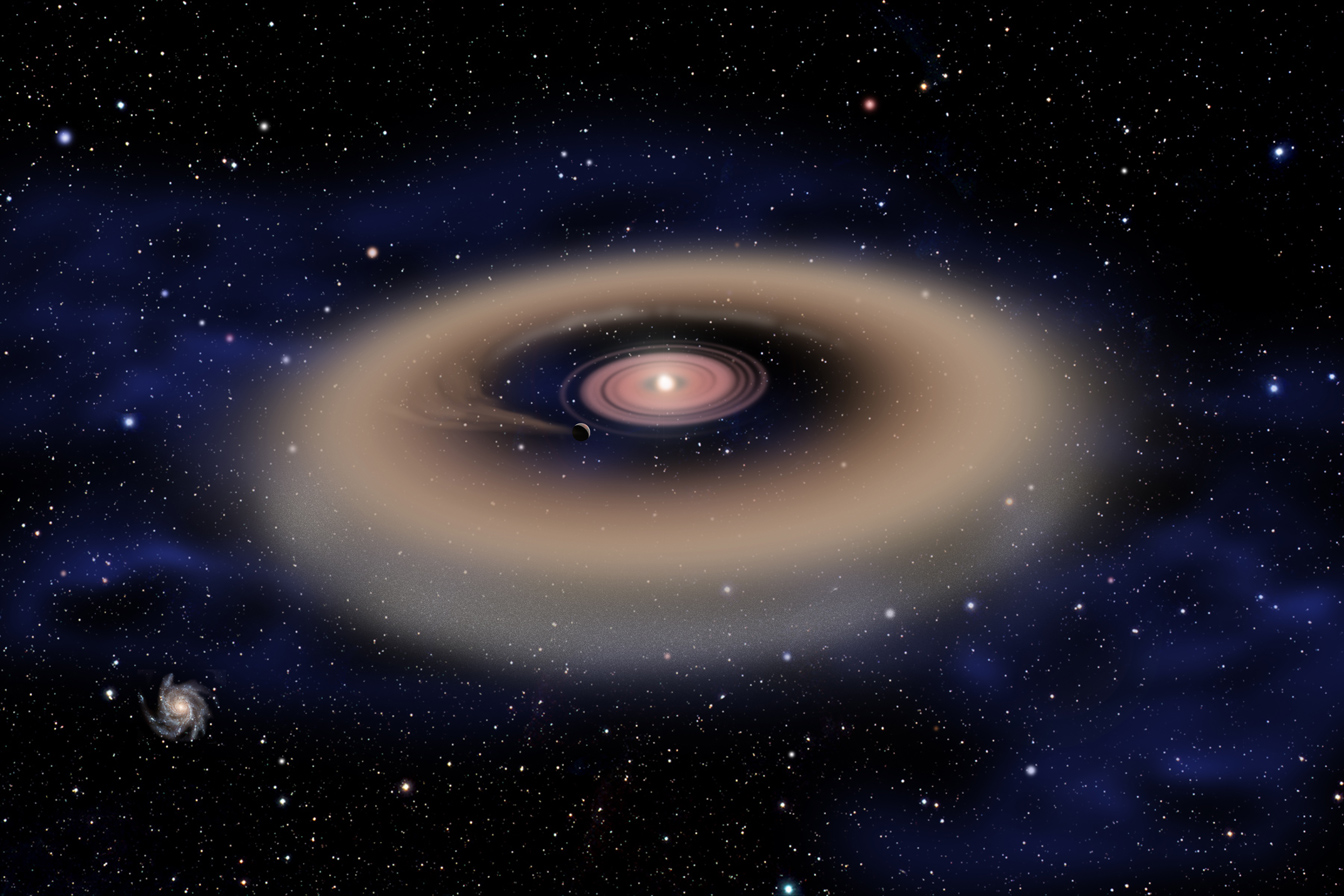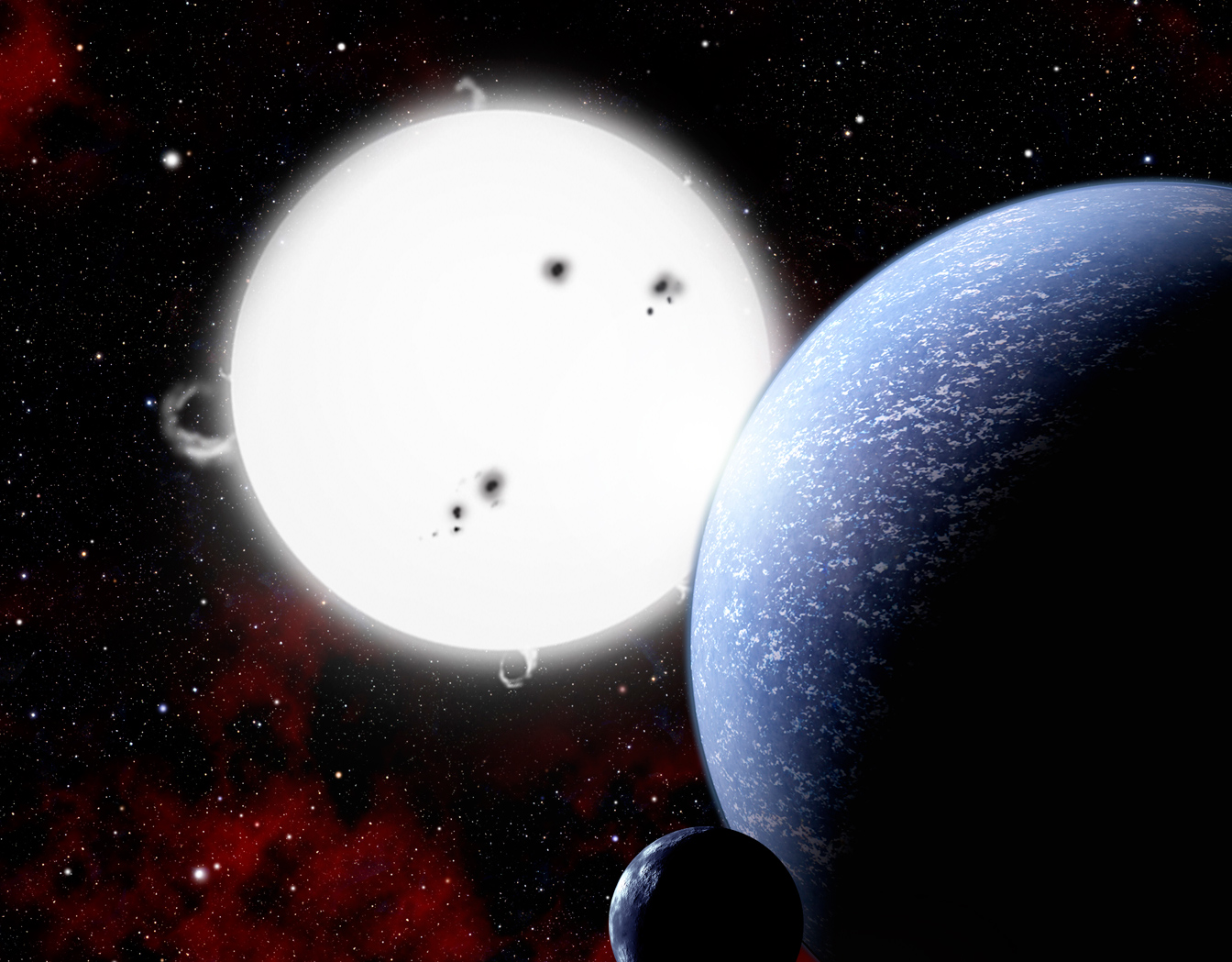Image List
-

This artist's conception shows a Jupiter-sized planet forming from a disk of dust and gas surrounding a young, massive star. The planet's gravity has cleared a gap in the disk. Of more than 500 stars examined in the W5 star-forming region, 15 show evidence of central clearing that may be due to forming planets.
David A. Aguilar, CfA -

In this artist's conception, a hypothetical alien world and its moon orbit a hot, massive, type B star. Due to the short lifetime of such a star, complex life is unlikely to be found there. Although not good targets in the hunt for extraterrestrials, such planetary systems help give us a better understanding of planet formation.
David A. Aguilar, CfA -

This infrared portrait of the W5 star-forming region is from NASA's Spitzer Space Telescope. Astronomers examined more than 500 massive stars in W5 looking for infrared evidence of dusty disks. They found that about one-tenth of the stars examined appear to possess such disks. The stars in W5 are only about two to five million years old, yet most have already lost the raw materials needed to form planets. This indicates that, at least for type A and B stars, planets must form quickly or not at all. This image is a three-color composite showing infrared observations from two Spitzer instruments. Blue represents 3.6-micron light and green shows light of 8 microns, both captured by Spitzer's infrared array camera. Red is 24-micron light detected by Spitzer's multiband imaging photometer.
NASA/JPL-Caltech/Harvard-Smithsonian CfA